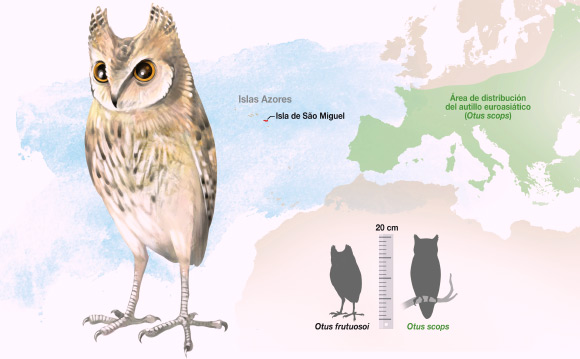Paleontologists have identified a new species of scops owl that lived on São Miguel Island, the Portuguese archipelago of the Azores, until about 500 years ago.

Reconstruction of Otus frutuosoi (J. A. Peñas / SINC)
Small fossil bones of the new species were unearthed in the Água de Pau cave in 2011 by Dr Juan Carlos Rando from the University of La Laguna and Dr Josep Antoni Alcover from the Mediterranean Institute for Advanced Studies in Mallorca. Carbon dating has shown that the fossils are about 1,970 years old.
The paleontologists have named the new species Otus frutuosoi in honor of the 16th-century Azorean historian Gaspar Frutuoso.
According to a paper published in the journal Zootaxa, Otus frutuosoi is closely related to the European scops owl. It went extinct soon after people reached the Azores in the 15th century.
“Humans have a history of changing island ecosystems. When humans arrived on the island mice started to appear and laurisilva – a type of humid forest – was destroyed. This surely played a large part in the extinction of the São Miguel scops owl,” Dr Alcover explained to SINC.
“The body of the extinct scops owl of the Azores was shorter and wider than that of its modern-day European relatives. Its beak was short and small, similar to that of the nightjar. Having long legs and very short wings, it must have been a very poor flyer and thus more of a land-dwelling bird,” he said.
______
Bibliographic information: Juan Carlos Rando et al. 2013. A new species of extinct scops owl (Aves: Strigiformes: Strigidae: Otus) from São Miguel Island (Azores Archipelago, North Atlantic Ocean). Zootaxa 3647 (2): 343–357; doi: 10.11646/zootaxa.3647.2.6







